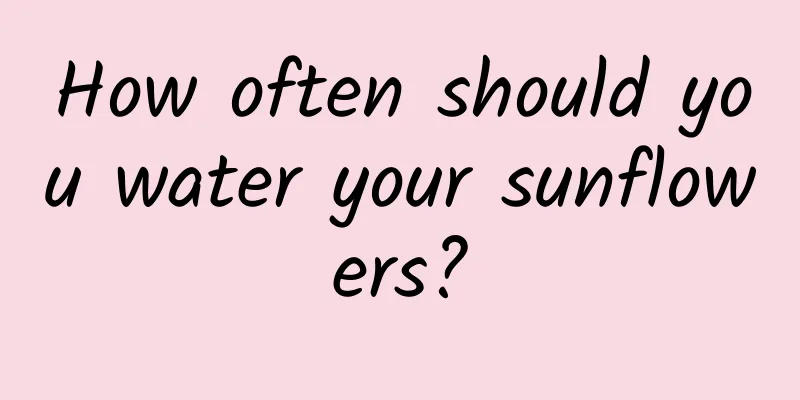How to deal with chive flowers after they wither

Post-flowering treatment of chives1. Cut off the remaining flowers The flowers of the leek will wither after September, but they bloom in batches, so before the next batch of flowers bloom, trim off the remaining flowers of the previous batch to reduce nutrient consumption and concentrate the nutrients on the growth of new buds. 2. Dig out the root bulbs After September, the flowering period of leek will end and all the flowers will wither. At this time, dig out its bulbs and transplant them into new pots, allowing it to overwinter smoothly and then sprout again in the spring of the following year. 3. Fertilization There is no need to fertilize chives after their flowering period, because their bulbs can be dug out and preserved. If you fertilize them at this time, it will lead to excess nutrition and fertilizer damage. You can water them appropriately to keep the soil moist. 4. Keep seeds The seed maturity period of leek orchid is between September and October. Since leek orchid flowers bloom one after another, the seed maturity period cannot be uniform and needs to be picked while maturing. So after the leek orchid seeds mature, they need to be placed in a shaded place with some newspapers or covered to dry. After drying, they should be packaged in kraft paper bags that are both sealed and do not accumulate water, and stored in a light-proof and ventilated place. 5. Repotting There is no need to repot the chives immediately after they wither. The best time to repot is in spring, because chives are in their peak growth period. After repotting, they can quickly adapt to the new soil environment and resume growth quickly. 6. Pruning After the leek orchid has finished blooming, some of the densely growing branches, overgrown branches, and dead branches should be pruned off. This can avoid excessive consumption of nutrients in the soil and also help to create a ventilated and breathable environment for the plant. Post-flowering care of chivesAllium likes to grow in an environment with plenty of sunlight. After the flowering period, it can be placed in a bright and well-lit location. This can promote the differentiation of flower buds and help it bloom more. However, when the temperature is too high in summer, it is best to put it in a cool place and spray water to lower the temperature. |
<<: Where is the best place to grow blood vine fruit?
>>: How to deal with lily of the valley after it withers
Recommend
How to prune an orange tree
When to prune orange trees Generally speaking, wi...
Ivy cultivation methods and precautions
1. Breeding methods 1. Soil: The requirements for...
Homemade rooting water, simple and easy to use
method Material Willow branches, water, small con...
Steps for growing lucky bamboo in water
1. Choose a container Choose the corresponding co...
How to raise Huang Li
Watering method Although Huangli is relatively ea...
Can lilies be planted in pots?
Can lilies be grown in pots? Lilies can be plante...
What are the benefits of eating onions? The nutritional value of onions
1. What are the benefits of eating onions? Antiba...
What are the cultivation methods and precautions of Zhulan?
Pearl orchid cultivation method Zhulan, also know...
Pink Eustoma Flower Language
1. Flower Language The flower language of this co...
How to grow aloe vera quickly
1. Suitable soil Only when the plant grows in goo...
The efficacy and function of Guanzhong
1. Anti-cancer Guanzhong also has certain anti-ca...
How to grow pansy seeds
1. Sowing time It can be sown in autumn so that i...
How to plant garlic
Garlic has a unique flavor and is grown throughou...
Is planting Podocarpus profitable? Prospects and benefits of planting
Is planting Podocarpus profitable? Podocarpus is ...
Can tiger lily be placed in the bedroom?
Is Tiger Piranha poisonous? Tiger tail orchid is ...









